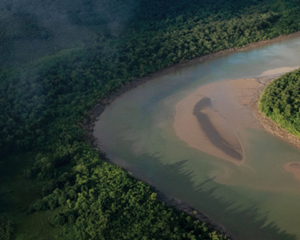It's day five of a research expedition to the Bailique Archipelago, and nothing has prepared me for the experience of this place, the easternmost end of the Rio Amazonas, where the planet's greatest river pours into the sea.

Plant detritus. Animal remains. Fragments of rock. It's such loaded river water, and there's so much of it that by the time it's coursing past the Bailique islands toward open sea, it resists blending with salt water to create the usual brackish estuary.











